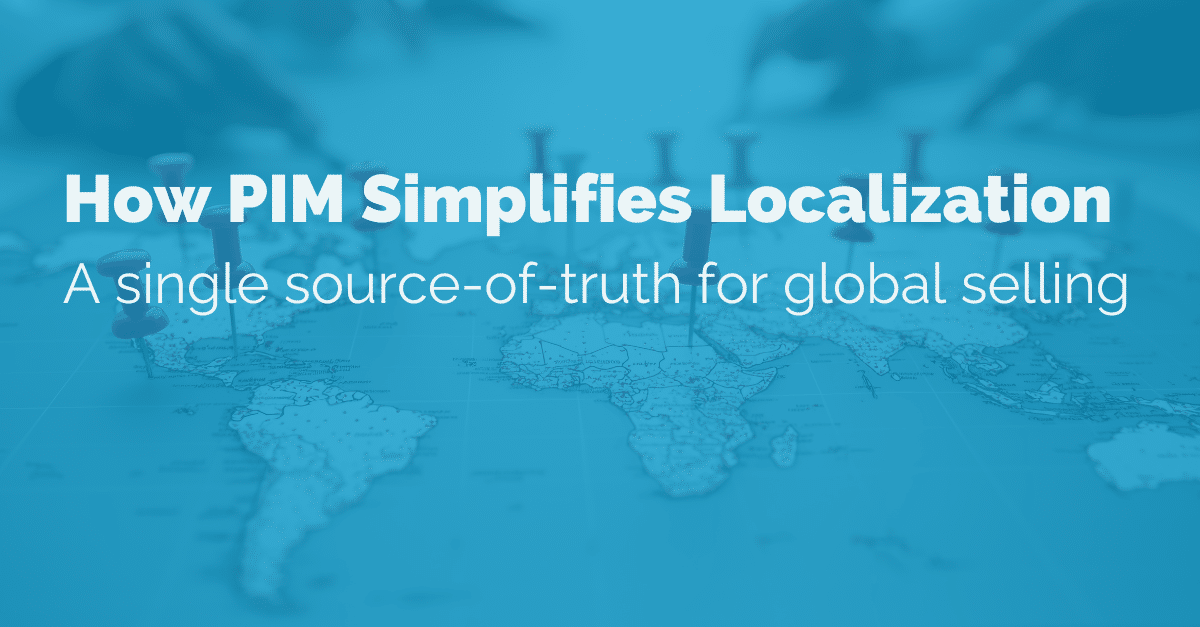Essential PIM Features
One of the most crucial tools for handling product information these days is a PIM system. PIM systems establish a repository that hold all product-related information, keep information current, and facilitate its dissemination. In essence, a modern PIM accomplishes this through simple data importation/administration, enrichment, and adaptation to the requirements of various sales channels.

PIM software is used primarily to centralize product information so it can be applied anywhere the brand desires. In other words, you can gather, compile, and enhance product information using a PIM system, which serves as a single source of truth. For example, combined and improved product descriptions can then be disseminated via other channels from your PIM platform.
These days, businesses with intricate product linkages and structures, as well as those with substantial assortments, must have a PIM; the more SKUs you have, the greater your need for one.
Even further, PIM users may have different needs and there are certain “must have” PIM features that can address all of these needs. Therefore, in addition to gathering all kinds of product data into one central location, a PIM solution optimizes, cleans, and publishes this data in accordance with requirements specific to each brand.
Efficient Product Data Management
You must monitor, collect, and manage product data if you run an online store. Important characteristics regarding the product, including specs, technical details, and descriptions, are included in this data. Product data management is a fundamental PIM function. With a PIM it’s simple to track, collect, organize, and export data. Additionally, PIM systems make it simple to track and maintain data without requiring additional effort.
Data can be manually or automatically loaded into a PIM system. Excel, CSV, and XML formats are supported by all PIM systems. Product data from ERP, PLM, DAM, MDM, and other business tools can also be imported. Suppliers can upload product details straight into the company’s PIM system via self-service portals provided by certain PIM systems.

Central Data Repository
All of a company’s current product information is centrally stored in a PIM system. PIM systems, which can arrange products based on particular criteria, allow you to handle multiple product catalogs.
You can retain historical catalog for comparison, backup, and legal reasons. The copy can also be utilized to make a new one at the same time. For this reason, PIM platforms provide extra features like product catalog cloning. This is the process of creating a new catalog by copying the old one and then updating it to reflect the vendor’s new information.
Overall, a PIM’s centralized database is economical, in addition to being easy to use and time-efficient. Centralized databases also require less manual labor and upkeep. It makes no difference how many channels, stores, or products you have. In other words, if you have a PIM solution, you can easily manage them all in real time for a cohesive customer experience.
Flexible Data Structure
There’s constant change and innovation and having a flexible, high-quality data structure is essential for survival. Companies that want to stay competitive in the market have to adjust to the shifting demands. A PIM software’s adaptable data structure can help you, as a user, deal with shifting market conditions and expectations.

Integrated eCommerce Platforms
How many Shopify stores does the average eCommerce manager oversee?
You can have several stores on any eCommerce platform in addition to Shopify. Therefore, you can use several platforms and channels to link them with PIM software, eliminating the need for you to select between them while marketing your product. Additionally, you can use a single click to disseminate your products across numerous marketplaces and websites. Such integration proves to be a core PIM feature for many brands.
Connection and integration with eCommerce platforms like Shopify and other platforms / marketplaces are made possible by this crucial PIM function. You may enhance the consumer experience by having consistent data across all channels in this manner. Additionally, you can target and connect with more local and international clients through efficient integration with marketplaces.
Multilingual Support
As an eCommerce manager, you are likely selling your product all over the world, which means that you must deal with multiple currencies and target a wide range of geographic areas. With a PIM solution, you can have many stores in multiple languages and currencies. Another core PIM feature is you may use the platform to manage all of your stores in one location, even if they are in various currencies and languages.
PIM system product information can be translated manually or semi-automatically to provide support for numerous languages. The most popular technique for selective translation is to employ a built-in translation service to translate specific fields, like titles, descriptions, and bullet points. With minimal human effort, the best PIM software can accelerate your go-to-market process. It assists in managing essential product data requirements, including diverse metrics, support for multiple currencies, and adaptation to cultural norms across different regions.

Efficient Data Changes
The idea of teamwork is the foundation of a PIM system. Editing flexibility enables team members to modify and alter product data. Team members may be making adjustments from various places across the world. “versioning” creates a copy in the history whenever you make changes, versioning, and history tracking help the team keep track of what other people have changed. Anyone with editing permissions can see and follow who made the changes and the time the changes were made.
Workflow Management
PIM workflow management facilitates accurate data management and organization. To guarantee data consistency and accuracy, the PIM workflow management approval processes must be followed correctly.
The workflow management feature improves the dependability, transparency, and manageability of the data addition process. It makes it possible to automate every procedure related to product information enrichment. Often, you may view a task’s status and the person in charge of it on the Workflows tab. Team members can also comment on each other’s work through this panel. More control over workflow is provided by certain sophisticated PIM systems.

Efficient Product Search
Catalogs, categories, and all of their attributes are used to group products and can be used to find or filter out data. You can save filters for later use, and you can use them as often as you like. Products can also be filtered based on the completeness of their description or the users that worked to enrich their information.
Beyond that, you can search for products by a word or a portion of a word that appears in the product’s description or any of its attributes. Usually, the suggested variations show up automatically when a search query is typed, allowing you to select one right away. You can conduct a robust search and access navigation capabilities across product information with ease due to the data structure’s flexibility and the product catalog’s obvious segregation. The product data is now easier to search, which saves a great deal of time and work. These important PIM features facilitate navigation, which maintains the organization of product data.
Product Variants Management
Product variants are versions of a product that differ in size, color, material, and other attributes while sharing core features. A PIM system streamlines the management and organization of these variants.
A PIM system simplifies accurate client information and variation tracking, allowing businesses to centralize product variant management. This ensures up-to-date information on pricing, availability, and inventory. Some PIM systems also offer advanced features like bulk variant management and automatic variant generation.

Bottom line
As you can see, a PIM system can offer all the features, support, and training required to expedite the processing of product information, improving its quality. This can free up your time to focus on your product line and new development tactics, which will ultimately boost sales.
However, keep in mind that not all systems offer all of the previously mentioned features, so you must be extremely attentive when selecting a system that fits your company’s requirements, goals, and financial constraints. Product information management, or PIM software features will assist you in every aspect of running an online store. PIM tools can enhance your personal experience and make tasks easier for you to do. If you are in search of the best PIM software for your business, contact us Pimberly.
















